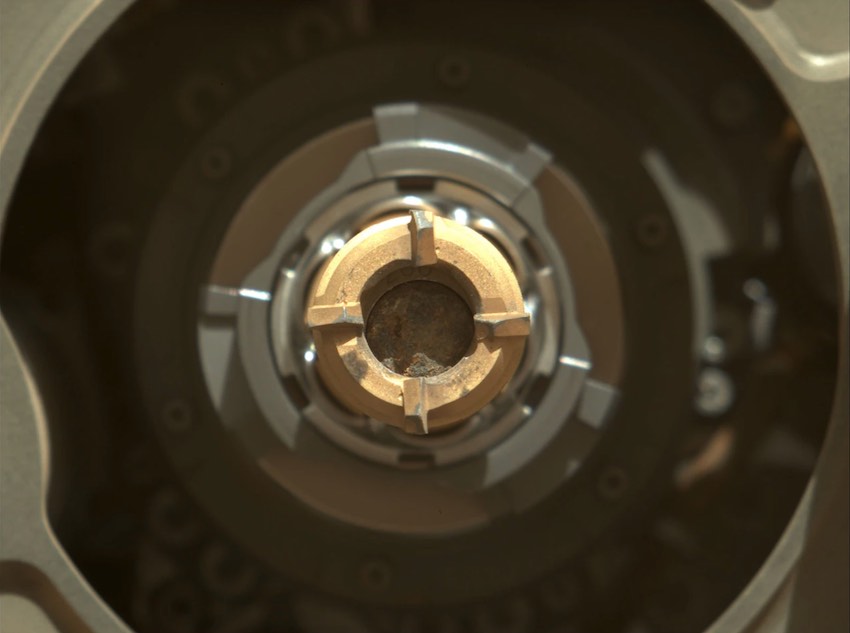On the 6th of September, the Mars Rover Perseverance drilled down into a briefcase-sized rock with its incredibly sophisticated sample and capture system, and then took a photo to commemorate the first Martian rock retrieved as part of its mission.

After a brief confusion, scientists and space enthusiasts finally saw the photo that conclusively showed a Mars rock captured in the sample tube, and were able to celebrate a truly historic moment.
Two days later it drilled a few inches to the left into the same rock and captured another sample.
Perseverance is exploring the bottom of an ancient lake bed known as Jezero Crater, where scientists believe the remains of ancient microbial life on Mars, should there be any, will be found.
“NASA has a history of setting ambitious goals and then accomplishing them, reflecting our nation’s commitment to discovery and innovation,” said NASA Administrator Bill Nelson. “This is a momentous achievement and I can’t wait to see the incredible discoveries produced by Perseverance and our team.”
RELATED: See Incredible Photos and Hear Martian Winds From the Red Planet—Thanks to Perseverance Rover

An August 7th attempt at drilling into the Martian regolith captured nothing, worrying scientists that their billion-dollar rover had flown the entire 3.5 years to Mars to return empty-handed.
“I have been on every Mars rover mission since the beginning, and this planet is always teaching us what we don’t know about it,” said the project manager for Perseverance, Jennifer Trosper. “One thing I’ve found is, it’s not unusual to have complications during complex, first-time activities.”
We know there was an atmosphere and water on Mars billions of years ago, and if those conditions had remained long enough, there’s a chance life could regenerate itself.
The next stop after gathering samples of Jezero will be the ancient lake’s fan-shaped delta, a class of landscape where life would explode with diversity and prosperity—at least on Earth. It holds one of the best chances we’ll have for finding microbial lifeforms. The delta could potentially contain clay, which rapidly entombs organic material. If there is any clay, there might be remains of life.
WATCH: China’s Rover Films Itself Driving on Red Planet, Making History
Another opportunity will be the carbonate rocks, which have been located in Jezero using Mars orbiter data, and which have been shown on Earth to exquisitely preserve organic structures such as seashells.
Perseverance is planned to study the geography of Mars as it travels along for a year or two, before depositing its samples back at the landing site, where a fetch rover, which could launch as early as 2026, will have to retrieve them.
It’s agonizing to think we are reporting on the collection of these samples now, but may have to wait 10 years for them to arrive back on Earth.
SHARE With the Space Nerds of Earth via Social Media…




















